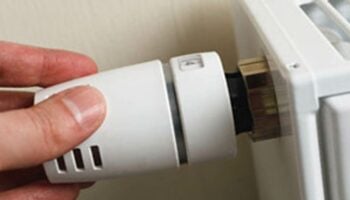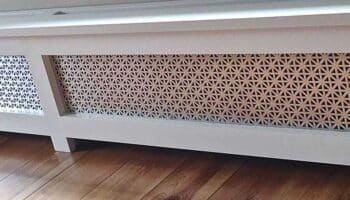We've independently reviewed this article to make sure it's as accurate as we can make it.
To find out more about our article creation and review process, check out our editorial guidelines.
Learning how to keep your water heater’s pilot light from going out due to wind is crucial in the winter. You won’t have to constantly interrupt what you’re doing just to get some warm water started again, but exactly how do you protect your pilot light?
You can prevent a faulty pilot light from wind by fixing your thermocouple, gas release, protecting against downdrafts, capping your chimney, and checking your firebox cover.
Ready to keep your pilot light from constantly going out? Let’s dive right in.
What You’ll Need
- All-purpose cleaner
- Towel
- Thermocouple (optional)
- Release Valve (optional)
- Chimney Cap (optional)
- Screwdriver
- Furnace Sealant (optional)
There are several reasons why your pilot light is going out, not just wind. Some of the materials are optional depending on your specific issue.
Step 1: Check Your Thermocouple
The most common issue for a pilot light going out is actually not the wind but the thermocouple. The thermocouple is what recognizes if the pilot light is on or off on your water heater.
If your pilot light goes out, the thermocouple immediately shuts down your water heater and you’ll need to restart the pilot light to get it going again.
The problem happens when your thermocouple is broken, dirty, or malfunctioning. Your pilot light could be working just fine but if the thermocouple doesn’t know that, you’ll be using cold water.
Your first step is going to be cleaning the thermocouple from any dirt or debris.
Use an all-purpose cleaner and spray it on an old towel and then start wiping away any gunk on your thermocouple.
If that doesn’t work, check to see if it’s properly aligned. Sometimes your thermocouple will move over time and will need to be readjusted.
Worst comes to worst, you have a broken thermocouple that needs replacing. You can find one for around $30 and replace it yourself or hire a contractor for a small fee.
Step 2: Look at the Gas Release Valve
Much like the thermocouple, the gas release valve is crucial to getting a pilot light started.
The gas release valve is what gives the pilot light its initial start so it can stay lit. Without it, your pilot light has no chance.
See if there’s any debris or dirt sitting in the gas release valve that’s blocking it from doing its job.
You might have to replace some parts that could have been damaged over time.
Consult your manual to see what the name of each piece is and then reach out to your home retail store to see if they carry the pieces.
Step 3: Feel for Any Downdrafts
Water heaters are connected to ventilation ducts or chimneys in order to pass cool air through to keep them functioning properly.
If your heater is connected to your ventilation system, you want to check for holes or leaks. Cool air that escapes increases the chances of a downdraft flowing back into your heater, blowing out your pilot light.
To check for a downdraft, put your hand close to the ventilation duct that connects to the heater.
Don’t place your hand on any of the pipes! They’re hot enough to burn your hand pretty good.
If you feel cold air flowing through the ducts, you are good to go. If there is warm air then you have a problem.
Another reason for your pilot light getting blown out by downdrafts is your vent getting blocked from the outside of the home.
If there is too much dust or debris built up on the vent leading to the outside of your home it will cause a downdraft.
Usually, home vents are on the roof or attic area so take extreme caution or better yet, just call a professional.
Step 4: Take a Look at Your Chimney Cap
Instead of your water heater being connected to your ventilation system, it could be connected directly to your chimney. The same downdraft could happen with your chimney but for different reasons.

A cap is placed on most chimneys to keep anything from the outside from coming in and vice versa.
If your cap wasn’t properly installed, or has corroded over time, your pilot could be suffering.
It isn’t recommended for you to go up to your chimney to figure out the problem. A professional can take a look at the chimney cap to see what might be the potential problem.
Step 5: Fix Leaks Around Your Firebox Cover
Each water heater pilot light has a cover that protects it from any external elements. This cover is meant to lay directly flush with your water heater so that no air or other debris can get inside.
When you’re having problems you’ll want to check all around your firebox cover to make sure there are no openings.
Even the smallest opening could allow wind to breeze right through, putting out your pilot light.
Take a screwdriver and see if it just needs to be tightened to stay flush. If your cover is bent and won’t stay flush, you’ll need to bust out some furnace sealant.
The furnace sealant is made for extreme temps and specific materials are most commonly used in water heaters. It should be durable enough to hold for several years.
You can always remove it if you need to get to your pilot light for any reason.
FAQ
How Do You Light a Water Heater Pilot Light?
To light the pilot light on a gas water heater, flip up the burner control to turn on the propane. It may take a few minutes for the pilot light flame to transfer to the burners before you can see heat coming out of the vents.
Use an oven igniter (or butane lighter) and hold it next to your heating element until you see a greenish blue flame flowing from your main burner ports, then let go.
You should hold down on the pilot light for at least five seconds once it is lit before letting go. This will ensure your pilot light won’t blow out right after you light it.
Will Gas Leak if a Pilot Light Is Off?
If your pilot is off, you will not have any gas being released. Your water heater will only use as much energy as needed to heat up the water that is expected to be needed by anyone who turns on a hot tap.
If you smell gas leaking from your water heater or you feel like gas may still be leaking, turn off the gas to your actual water heater.
You don’t want to continue to feed it gas if there could be a potential leak. This could cause a very dangerous accident if you tried to light your pilot light while a gas leak was coming from your water heater.
Should I Ever Turn Off My Pilot Light?
You should only have to turn off the pilot light if you’re going on vacation or need to repair your water heater. By turning it off you’ll be saving yourself from any potential problems by leaving it on.
When you are repairing your water heater it is part of your safety protocols to turn off your pilot light and gas.
Other than vacations and repairs, there is never a reason it would be necessary to turn the pilot light off.
When your pilot light is running, it helps to ignite the gas that is released to heat up your water. Without it running at all times, you’d have no way to get hot water in your home.
So, unless you are intentionally forcing everyone in your home to go without hot water, there is no reason not to have it on.
Can I Turn On a Water Heater Without a Pilot Light?
There is no way for you to start a water heater without a pilot light because the heater would have no fire source to heat up the water.
You could potentially use a long lighter to ignite the gas that is feeding into the burner, but most machines will have a safety mechanism that won’t allow any gas to be released if there is no pilot light.
Keeping the Pilot Light On
Wind can easily blow out your pilot light if the firebox cover or downdraft is affecting the flame. If that’s not the issue, check your thermocouple, gas release valve, or ventilation system to see if there are additional problems. Thanks for reading and make sure to learn any related issues in the articles below!







